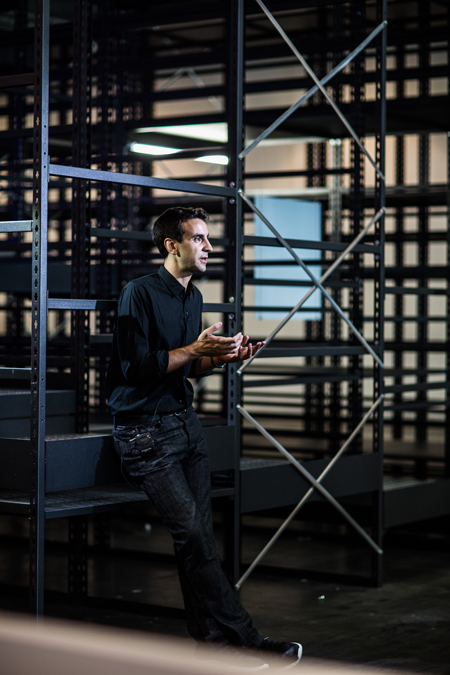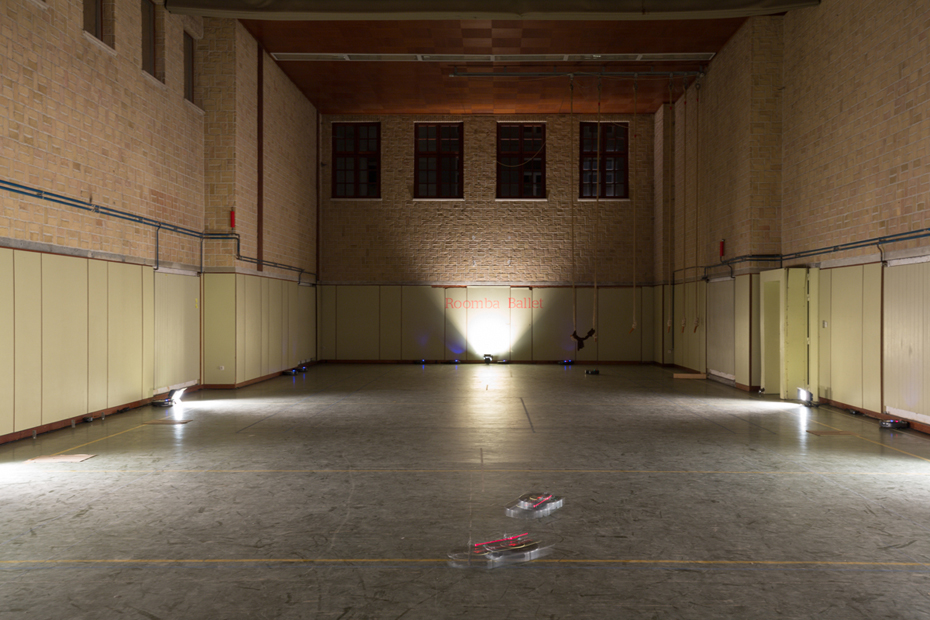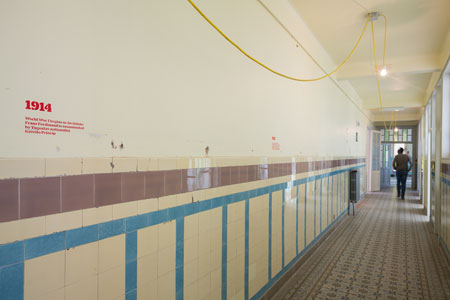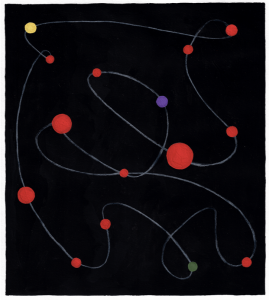The curator of this year’s Interieur cultural programme, Joseph Grima, talks to Betty Wood about how the home has changed irrevocably in the last 60 years

Biennale Interieur is back, and this year the design festival director Lowie Vermeersch has invited British architect and author Joseph Grima and his studio, Space Caviar, to curate a special programme of installations at the fair.
Exploring the theme of the home – the heart of the interior design fair itself – Space Caviar takes the provocative statement, “The Home Does Not Exist” and unpacks it across a series of four projects: a book, a film, and two installations. “In demanding that both our furniture and living conditions fit our contemporary nomadism, and by participating in massive financial wagering on the real estate market, we have exerted a dematerialising effect on the infrastructural underpinnings of our daily lives as we require more freedom from their size, weight and pressure”, Space Caviar write in the introduction to their Interieur curatorial programme. The home, no longer an arena simply for domestic living, has become a hub of data production, as well as a commodity political tool.
 Betty Wood talks to Joseph about the changing role of home, and how cultural attitudes to home ownership have shifted over time.
Betty Wood talks to Joseph about the changing role of home, and how cultural attitudes to home ownership have shifted over time.
Why did you adopt such a provocative statement as the starting point for the project?
Joseph Grima: First of all, Space Caviar is not as a traditional design studio: we look at certain questions that are pressing and aren’t being answered or discussed, and find new ways of talking about these through a multiplicity of languages that exist somewhere between research, writing, design, filmmaking and curation combined.
Neither is this a curatorial project in the traditional sense, where you pick some designers, put something in a line and say ‘These are the new trends in domestic furnishing or domestic design’ etc.
The Home Does Not Exist is an attempt to go much further and create an integrated project that tackles an incredibly thorny, complex and complicated problem without the ambition to be scientifically accurate or to provide every possible answer. Our ambition is to raise questions in the context of an audience here that has the possibility to, and is in need for, these questions to be answered.
How did you tackle the project?
JG: We divided the project into four parts: an installation here in the Rambla, The Theatre of Everyday Life; a book called SQM: Quantified Home; a film called The Fortress of Solitude; and an intervention on the Broel School downtown, which is an exhibition inside of an old school building that’s going to be torn down at the end of the biennale. Through all of these, we look at the provocation that the home does not exist as a way of asking the question, what is the home today? What has it become? Why is it that such an institution as the Biennale, which was founded in 1968, is presenting today fundamentally the same things as it was when it started?
If you were to travel back in time 46 years, the colour of the sofas would be different, the shape and maybe even some of the materials they’re made out of be different, but ultimately, a sofa is a sofa. The stuff that is being presented is the same, but the way that we live, the spaces that we live in, our relationship to the home has fundamentally changed. So there’s a disconnect there, and what we’re attempting to do is unpack this.
Below: SQM Roomba Ballet. Credit Delfino Sisto Legnani
 One of the things that popped into my head walking around The Theatre of Everyday Life was the idea of the American Dream. By that, I mean the idea of homeownership, of staking your claim to the land. How much has the export of this American Dream impacted European culture and how has contributed to changing our idea of the home?
One of the things that popped into my head walking around The Theatre of Everyday Life was the idea of the American Dream. By that, I mean the idea of homeownership, of staking your claim to the land. How much has the export of this American Dream impacted European culture and how has contributed to changing our idea of the home?
JG: It’s a very interesting point, and in fact, it’s one of the questions we tackle in the exhibition at the Broel School. As you move through the school, you read about certain historical events that led to the condition we’re in now. One of these events was a policy in the early 20th century, after the Second World War, implemented by the US government (and Western governments in general) where one of the strategies for tackling the ‘threat of communism’ was to encourage home ownership.
 There’s a quote that summarises this: ‘Communism will not take root in a society with its feet firmly embedded in the culture of home ownership.’ This was policy couched as a dream. And this is something that the capitalist economy is fundamentally wedded to: it’s something that’s deeply embedded in the idea of homeownership, or private property and so on.
There’s a quote that summarises this: ‘Communism will not take root in a society with its feet firmly embedded in the culture of home ownership.’ This was policy couched as a dream. And this is something that the capitalist economy is fundamentally wedded to: it’s something that’s deeply embedded in the idea of homeownership, or private property and so on.
One of the things we look at in the book, for example, is the ration between renting and homeownership. It’s interesting to see that even within Europe, profoundly different models exist. In Italy for example, there’s a very deeply rooted model of home ownership, whereas in Germany, where there’s been an ongoing policy for a very long time to stabilise the market through regulation and policy, there’s been very little growth in home ownership.
Given the economic strife of the last few years, do you think that consumers are behaving in a more conservative way? How do you respond to that conservatism as a designer?
JG: Good question. It’s something that as an industry we’re still working out. I should stress though that conservatism isn’t always or necessarily a bad thing – especially in contrast to the disposable culture that preceded. Longevity is of course key, that and working out what it is that the home means today so that we can best respond to the needs of the consumer. Now the question is out there, hopefully we can start answering it as an industry.
Biennale Interieur runs in Kortrjik, Belgium until 26 October. SQM: The Quantified Home is out 24 October via Lars Müller Publishers. Click for more info




